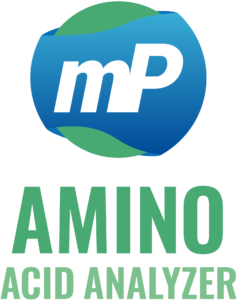Amino Acids in plants, as essential nutrients for plant growth. A possible field of application for amino acid analysis
Amino acids are essential nutrients for plant growth. Due to the characteristics of amino acids, they have a unique promotion effect on plant growth, especially on photosynthesis. Like glycine, it can increase plant chlorophyll content, raise enzyme activity, promote carbon dioxide penetration, and make photosynthesis more vigorous. It plays an important role in improving crop quality and increasing the content of VC and sugar.
In addition, amino acids such as glutamic acid and aspartic acid serve as precursors for chlorophyll biosynthesis and nitrogen assimilation pathways, further supporting their role in plant productivity (Forde & Lea, 2007).
Amino acids as complexing agents
Amino acids can also function as complexing agents. Macroelements such as N, P, K, and trace elements like Zn, Fe, Cu, Mn, B, Mo are essential substances in crops. Crops often have symptoms of lack of certain elements. The reason is that the effective part that can be absorbed by crops is too small. Amino acids can chelate with poorly soluble elements to protect the elements needed by crops and generate chelates with good solubility and easy absorption for crops, thereby facilitating plant absorption.
Chelation with amino acids has been shown to improve micronutrient uptake efficiency in various crops, leading to enhanced plant vigor and yield, especially under suboptimal soil conditions (Saa et al., 2015).
Amino acids as nitrogen sources
Amino acids are good organic nitrogen sources in plant tissue culturing. They can be directly absorbed and utilized by cells, promote protein synthesis, and have a good effect on the growth and differentiation of buds, roots and embryoids. The absorption of amino acids by plant roots is carried out by special transport substances called amino acid transporters. Amino acid transporters exist on the cell membranes of various plant tissues (roots, leaves, stems, flowers and fruits). They can bind to amino acids and guide amino acids across the cell membrane into the cell.
Recent studies have shown that amino acid transporters not only regulate nutrient acquisition but also play a role in signaling processes that influence root architecture and stress responses (Tegeder & Masclaux-Daubresse, 2018).
Tissue culture
The commonly used amino acids in tissue culture are glycine, arginine, glutamic acid, serine, cysteine, and amino acid mixtures, such as hydrolyzed lactoprotein and hydrolyzed casein. Among them, glycine can promote the growth of excised roots and the production of plant tissue; serine and glutamine are beneficial to the differentiation of anther embryoids or adventitious buds; cysteine can delay the oxidation of phenolic substances and prevent browning; hydrolyzed lactoprotein and hydrolysated casein have a good effect on the differentiation of embryoids and adventitious buds.
Moreover, the antioxidative properties of cysteine are crucial in plant tissue culture to reduce oxidative stress and phenolic-induced browning, which often limits explant viability (Gaspar et al., 2010).
Amino acid nutrient liquid fertilizer
Spraying or irrigating amino acid nutrient liquid fertilizer can increase the element of various nutrients required in the plant, aggravate the accumulation of dry matter and the speed and quantity of the operation from the root or leaf to other parts, and adjust the proportion and balance of macroelement, trace element and other nutrients. Thus the normal growth of the plant will be regulated.
Field experiments have shown that foliar application of amino acid-based liquid fertilizers can significantly improve plant nutrient balance, biomass accumulation, and stress tolerance, particularly in horticultural crops like tomatoes and lettuce (Colla et al., 2017).
National standard: GB/T 30987-2014
References:
- Forde BG, Lea PJ. “Glutamate in plants: metabolism, regulation, and signalling.” J Exp Bot. 2007;58(9):2339-2358. doi:10.1093/jxb/erm121
- Saa S, Olivos-Del Rio A, Castro S, Brown PH. “Amino acid–chelates in plant nutrition.” Front Plant Sci. 2015;6:696. doi:10.3389/fpls.2015.00696
- Tegeder M, Masclaux-Daubresse C. “Source and sink mechanisms of nitrogen transport and use.” New Phytol. 2018;217(1):35-53. doi:10.1111/nph.14876
- Gaspar T, Franck T, Bisbis B, et al. “Concepts in plant stress physiology. Application to plant tissue culture.” Plant Growth Regul. 2010;63(2):115-129. doi:10.1007/s10725-010-9517-9
- Colla G, Rouphael Y, Canaguier R, et al. “Biostimulant action of a plant-derived protein hydrolysate produced through enzymatic hydrolysis.” Front Plant Sci. 2017;8:2202. doi:10.3389/fpls.2017.02202

